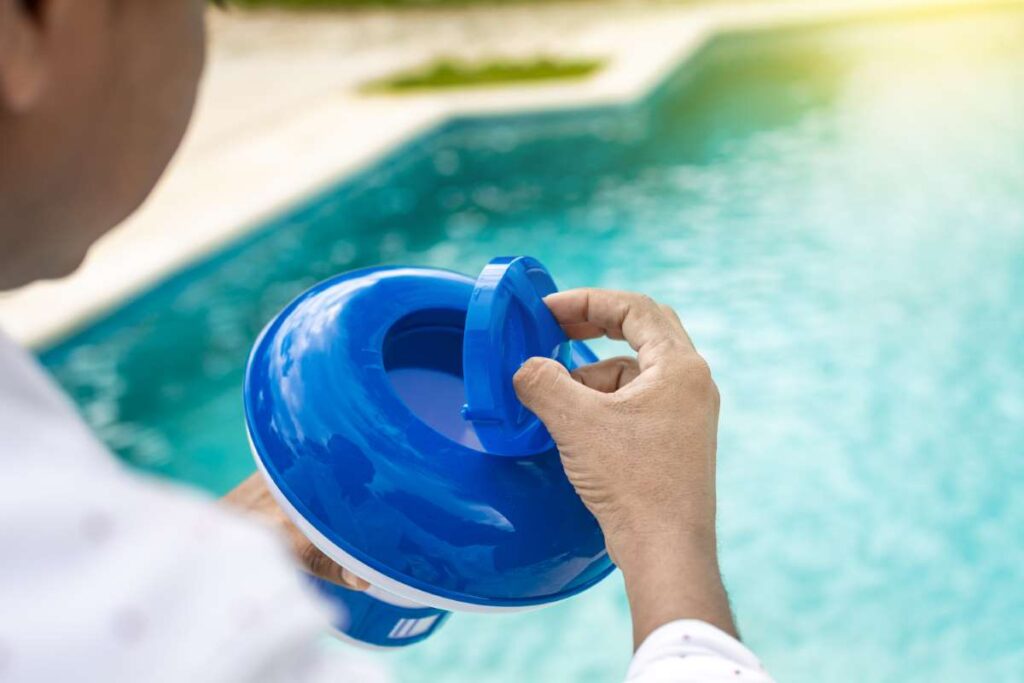Educating Clients on Rainfall Harvesting for Pool Top-Offs
Discover the benefits of rainfall harvesting for pool top-offs, a sustainable way to maintain your pool while saving on water costs.
This comprehensive guide explores the importance and practicality of utilizing rainfall harvesting systems for topping off swimming pools. As water conservation becomes increasingly vital in today’s climate, homeowners and pool service professionals alike are seeking effective methods to maintain their pools sustainably. This article will delve into how rainfall harvesting can serve as an eco-friendly alternative for pool maintenance, its benefits, practical implementation, and best practices for clients.
Introduction to Rainfall Harvesting
Rainfall harvesting, often referred to as rainwater harvesting, is a method that captures and stores rainwater for various uses, including irrigation, drinking water, and even for topping off swimming pools. With the increasing focus on sustainability and environmental responsibility, more pool owners are considering this practice as a viable option.The relevance of this approach cannot be overstated. Not only does it contribute to significant water conservation, but it also reduces reliance on municipal water systems, thereby lowering utility bills. Furthermore, it provides a natural source of water that is often softer and free of chlorine, making it an ideal choice for pool maintenance.As we explore the various aspects of rainfall harvesting for pool top-offs, we’ll discuss its benefits, installation processes, and maintenance tips that ensure clients can maximize their pool experience while being environmentally conscious.
Understanding the Benefits of Rainfall Harvesting
– Cost Savings: One of the most significant advantages of implementing a rainfall harvesting system is the reduction in water bills. Homeowners can save substantially, particularly in regions where water costs are high. Utilizing harvested rainwater for pool top-offs means less reliance on municipal water supplies, especially during peak usage seasons.- Environmental Impact: Rainwater harvesting contributes to the conservation of natural resources. By using rainwater, pool owners can help reduce the demand on local water supplies, thus supporting sustainability efforts in their communities. Furthermore, this practice minimizes stormwater runoff, which can lead to erosion and water quality issues in local ecosystems.- Improved Water Quality: Rainwater is naturally soft, lacking the minerals and chemicals commonly found in municipal water. This makes it gentler on pool equipment and can lead to lower levels of chloramines, improving the overall swimming experience.- Flexibility and Convenience: A well-designed rainwater harvesting system can provide a reliable source of water, particularly in regions that experience irregular rainfall patterns. This system can be set up to automatically fill pools when levels drop, ensuring that pool maintenance remains hassle-free.
How to Implement a Rainfall Harvesting System
To take advantage of the benefits of rainfall harvesting, pool owners need to establish a functional system. Here’s a step-by-step guide to implementing a rainwater collection setup:1. Assess the Site: Determine the best location for rainwater collection. Look for areas of the roof that receive ample rainfall and have the potential to direct water into storage tanks.2. Choose a Storage Solution: Depending on the pool size and water usage, select an appropriate storage tank. Options vary from above-ground tanks to underground cisterns. Ensure the tank material is suitable for water storage.3. Install Gutters and Downspouts: Properly installed gutters and downspouts are essential for directing rainwater from the roof to the storage tank. Ensure that these are appropriately sized to handle heavy rainfall.4. Set Up a Filtration System: Incorporate a filtration system to remove debris and contaminants from the harvested rainwater. This can include mesh screens and first-flush diverters that prevent the initial dirty water from entering the storage tank.5. Connect to the Pool System: Work with a professional to connect the harvested rainwater system to the pool’s plumbing. This ensures that the collected water can be easily directed into the pool when needed.6. Regular Maintenance: Periodically check and maintain the system components, including gutters, filters, and the storage tank, to ensure efficiency and cleanliness.By following these steps, clients can successfully implement a rainfall harvesting system that meets their pool maintenance needs while promoting water conservation.
Best Practices for Utilizing Harvested Rainwater in Pools
Once a rainfall harvesting system is in place, clients should adopt best practices to ensure optimal pool maintenance and water quality:- Monitor Water Quality: Regular testing of harvested rainwater is essential to ensure it is safe for use in pools. Check for contaminants such as bacteria, pH levels, and chemical imbalances.- Use a Treatment System: Consider installing a water treatment system if the harvested rainwater will be used for topping off the pool. This can help maintain water clarity and hygiene, ensuring that swimmers enjoy a safe swimming environment.- Implement a Water Management Plan: Encourage clients to establish a water management plan that details how and when harvested rainwater will be used for pool maintenance. This plan can help optimize water use throughout various seasons.- Educate on Seasonal Variations: Educate clients about the implications of seasonal rainfall patterns. For instance, during dry seasons, clients may need to supplement their pool’s water with municipal supplies.- Regular System Checks: Advise clients to conduct regular inspections of their rainwater harvesting system, ensuring all components, including gutters and filters, are clear of debris and functioning effectively.By adopting these practices, clients can maximize the benefits of their rainfall harvesting systems, ensuring their pools remain well-maintained and sustainable.
Real-World Examples of Successful Rainfall Harvesting
To illustrate the effectiveness of rainfall harvesting for pool top-offs, let’s examine a few real-world examples:- Case Study 1: Residential Pool in Florida: A homeowner in Tampa installed a rainwater collection system that captures runoff from their roof. After a year, they reported a 30% reduction in their water bill, credited largely to using harvested rainwater for topping off their pool. They also noted that pool maintenance became easier, with fewer chemical adjustments needed due to the softer water.- Case Study 2: Community Pool in Texas: A community pool facility in Austin implemented a large-scale rainwater harvesting system. This system has not only reduced water costs by approximately 40% but also received positive feedback from users who appreciated the quality of the water. The facility has become a model for local sustainability initiatives.- Case Study 3: Eco-Conscious Home in California: In a bid to promote eco-friendliness, a homeowner in Los Angeles installed a rainwater harvesting system alongside a greywater recycling setup. They successfully reduced their overall water consumption by 50%, allowing them to maintain their pool using predominantly harvested rainwater.These examples emphasize how effective and beneficial rainfall harvesting can be, not just for individual pool owners but also for larger community initiatives.
Conclusion
In conclusion, educating clients about rainfall harvesting for pool top-offs is an essential step towards promoting sustainable pool maintenance practices. The numerous benefits, including cost savings, environmental impact, and improved water quality, make it a practical choice for modern pool owners. By understanding how to implement and maintain a rainwater collection system, clients can enjoy their pools while contributing positively to the environment.As water scarcity issues become more pressing, embracing alternatives like rainfall harvesting will not only help maintain pools efficiently but also inspire a larger movement towards sustainability. Encourage your clients to consider this innovative solution, ensuring they take part in a greener future while enjoying their swimming experience.For those interested in exploring this further, consider looking into
Superior Pool Routes, which offers valuable resources and support for pool service professionals aiming to integrate sustainable practices into their operations. Whether you’re searching for
pool routes for sale in Florida or looking for a solid foundation in pool service, Superior Pool Routes provides unparalleled training and support.Let’s take a step towards sustainability together—educate your clients, implement rainfall harvesting, and enjoy the benefits for years to come!



